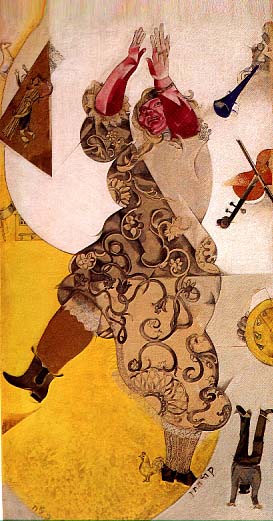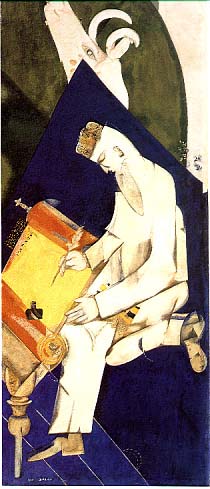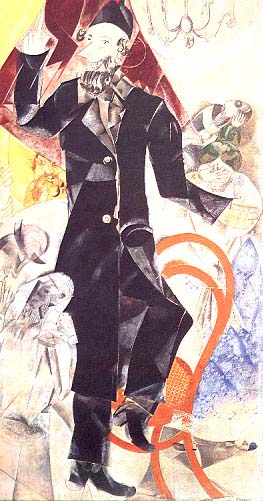
Dance

Literature

Drama
|
Dance
|
Literature |
Drama |
In 1920 Marc Chagall designed the interior of EKT (acronym for Jewish Chamber Theater, later - GOSET, State Jewish Theater). Aleksandr Tairov, the director of the Russian Chamber Theater, had promoted a new perception of the artist's function: rather then painting the backdrop decoration alone, the artist constructed the whole, 3-dimensional stage. But Chagall went beyond even this radical notion. Within 40 days, working alone, he painted a 26-foot-long canvas called "Introduction to the new theater" and depicted Efros who carries Chagall in his hands to Granovskii surrounded by acrobats, dancers and musicians. He also painted 4 tall images of the Arts, which contributed to the new theater according to Granovskii's conception, "Music", "Dance", "Drama", "Literature"; a long frieze "The Wedding Table"; image "Love on the Stage". In sum, the murals covered all the walls, and according to some sources, the ceiling was painted as well. Thus, the audience experienced a performance within a Chagallian 4-wall space. (Excerpt from article by Benjamin Harshav in "Marc Chagall and Jewish Theater". New York, 1991).
Before the first premiere of GOSET in Moscow Chagall "cried as a child ... when chairs for spectators were installed to the theater's hall designed by him. He said: "Those damned Jews will hide my painting, they will touch it with their thick backs and greasy hair"" (Abram Efros Khudozhniki teatra Granovskogo. Kovcheg, no. 2. Moscow - Jerusalem, 1991, p. 231).